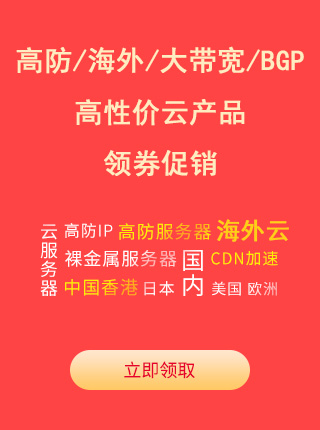- 所在位置:
- 首页 >
- 编程技术 >
- JavaScript >
- Nod.Js如何执行脚本,实时输出的实现方法是什么
Nod.Js如何执行脚本,实时输出的实现方法是什么
Admin 2022-08-16 群英技术资讯 1023 次浏览
 在实际应用中,我们有时候会遇到“Nod.Js如何执行脚本,实时输出的实现方法是什么”这样的问题,我们该怎样来处理呢?下文给大家介绍了解决方法,希望这篇“Nod.Js如何执行脚本,实时输出的实现方法是什么”文章能帮助大家解决问题。
在实际应用中,我们有时候会遇到“Nod.Js如何执行脚本,实时输出的实现方法是什么”这样的问题,我们该怎样来处理呢?下文给大家介绍了解决方法,希望这篇“Nod.Js如何执行脚本,实时输出的实现方法是什么”文章能帮助大家解决问题。接到需求
需要一个服务来执行shell脚本,要求可以实时打印shell脚本执行的过程,并看到脚本执行的结果。
明确任务目标:
-
这是一个web服务,需要执行shell脚本
-
当一个脚本执行的时候,再次发送请求需要等待当前脚本执行完毕,再自动执行这次请求
-
使用长连接而不是socket
-
添加脚本不需要重启服务器
这里采用的是express框架
开始
首先搭好express基本框架
新建app.js文件, npm install express
const express = require('express');
const app = express();
app.get('/:id', (req, res) => {
const { id } = req.params;
if (id === 'favicon.ico') {
res.sendStatus(200);
return;
}
// 执行脚本
});
app.set('port', 3018);
app.listen(app.get('port'), () => console.log(`server listening at ${app.get('port')}`));
新建文件
新建config.json用于配置id和脚本名的对应关系,新建scripts目录用于存放脚本。
这里定义一个函数execute参数为id和response对象,代码如下:
const pidDict = {};
async function execute(id, res) {
delete require.cache[require.resolve('./config.json')];
const config = require('./config.json');
const filePath = config[id];
if (!filePath) {
res.sendStatus(404);
return;
}
console.log(`The script:${filePath} with ${id} begin execute`);
const readable = new Readable();
readable._read = () => {};
readable.pipe(res);
while (pidDict[id]) {
readable.push('\nWaiting for another script request.');
await wait(5000);
}
const handle = spawn('sh', [`./scripts/${filePath}`]);
pidDict[id] = handle.pid;
handle.stdout.on('data', (data) => {
readable.push(`\n${data}`);
getLogger(filePath).log(`\n${data}`);
});
handle.stderr.on('data', (data) => {
getLogger(filePath).warn(`\n${data}`);
readable.push(`\n${data}`);
});
handle.on('error', (code) => {
getLogger(filePath).error(`child process error with information: \n${code}`);
readable.push(`child process error with information: \n${code}`);
delete pidDict[id];
readable.push(null);
});
handle.on('close', (code) => {
getLogger(filePath).log(`child process close with code ${code}`);
delete pidDict[id];
readable.push(null);
});
}
解释:
-
首先要加载
config.json,需要注意的是,因为是需要动态引入,所以这里不能直接使用require('config.json'),在这之前,需要先删除引入的缓存:delete require.cache[require.resolve('./config.json')]; -
获取文件路径
const filePath = config[id]; -
新建读写流,可以直接发送到前端。
-
再执行脚本前,需要判断当前有无脚本执行,这里在外部定义了一个pidDict,文件对应的id直接指向文件执行的handle的pid
-
紧接着就是输入输出流了
-
handle.stdout是标准输出
-
handle.stderr是错误输出,这里指的是输出的警告
-
handle的error事件指的是脚本执行中遇到的错误,也就是脚本执行不成功报的错误信息
这里定义了两个外部函数,一个是自定义的日志打印,另一个是遇到有脚本执行时的等待
新建
utility.jsconst fs = require('fs'); /** * time wait * * @param time {number} time(ms) to wait */ /* eslint-disable compat/compat */ const wait = async (time = 1000) => { return new Promise((resolve) => { setTimeout(resolve, time); }); }; /** * set log * * getLogger(path).level * level: * log * trace * debug * info * warn * error * @param path */ function getLogger(path) { return require('tracer').console({ transport: (data) => { console.log(data.output); fs.appendFile(`./logs/${path}.log`, `${data.rawoutput} \n`, () => {}); }, }); } module.exports = { wait, getLogger, }; -
新建脚本
现在,新建scripts/hello-world.sh
#!/bin/sh
echo 'hello...'
sleep 5
echo 'world!'
config.json中注册该脚本
{
"hello-world": "hello-world.sh"
}
执行node app.js,通过curl http://localhost:3018/hello-world即可观察到运行结果。
附
这里放上app.js的完整代码
const express = require('express');
const { spawn } = require('child_process');
const { Readable } = require('stream');
const { wait, getLogger } = require('./utility');
const app = express();
app.get('/:id', (req, res) => {
// 执行脚本
const { id } = req.params;
if (id === 'favicon.ico') {
res.sendStatus(200);
return;
}
execute(id, res).then();
});
const pidDict = {};
/**
* 执行sh脚本
*
* @param id 脚本id
* @param res response object
*/
/* eslint-disable no-underscore-dangle, no-await-in-loop */
async function execute(id, res) {
delete require.cache[require.resolve('./config.json')];
const config = require('./config.json');
const filePath = config[id];
if (!filePath) {
res.sendStatus(404);
return;
}
console.log(`The script:${filePath} with ${id} begin execute`);
const readable = new Readable();
readable._read = () => {};
readable.pipe(res);
while (pidDict[id]) {
readable.push('\nWaiting for another script request.');
await wait(5000);
}
const handle = spawn('sh', [`./scripts/${filePath}`]);
pidDict[id] = handle.pid;
handle.stdout.on('data', (data) => {
readable.push(`\n${data}`);
getLogger(filePath).log(`\n${data}`);
});
handle.stderr.on('data', (data) => {
getLogger(filePath).warn(`\n${data}`);
readable.push(`\n${data}`);
});
handle.on('error', (code) => {
getLogger(filePath).error(`child process error with information: \n${code}`);
readable.push(`child process error with information: \n${code}`);
delete pidDict[id];
readable.push(null);
});
handle.on('close', (code) => {
getLogger(filePath).log(`child process close with code ${code}`);
delete pidDict[id];
readable.push(null);
});
}
app.set('port', 3018);
app.listen(app.get('port'), () => console.log(`server listening at ${app.get('port')}`));
上述内容具有一定的借鉴价值,感兴趣的朋友可以参考,希望能对大家有帮助,想要了解更多"Nod.Js如何执行脚本,实时输出的实现方法是什么"的内容,大家可以关注群英网络的其它相关文章。

免责声明:本站发布的内容(图片、视频和文字)以原创、转载和分享为主,文章观点不代表本网站立场,如果涉及侵权请联系站长邮箱:mmqy2019@163.com进行举报,并提供相关证据,查实之后,将立刻删除涉嫌侵权内容。
猜你喜欢
-
JavaScript构造函数用来做什么?详解构造函数的执行过程
今天我们来了解关于JavaScript构造函数的内容,下文会介绍构造函数是什么,构造函数用来做什么,构造函数的执行过程和构造函数的返回值这些,对新手学习和理解JavaScript构造函数有一定的帮助,需要的朋友可以参考。
-
ref是什么意思?在hooks中怎样使用?
这篇文章主要介绍ref在hooks中怎样使用的内容,对新手来说,可能对ref不是很了解,不清楚ref是什么意思,因此下文就给大家来详细的介绍一下ref,感兴趣的朋友可以参考下,希望大家阅读完这篇文章能有所收获,接下来小编带着大家一起了解看看。
-
vue项目中取不到data值的问题怎么解决
这篇文章主要介绍了vue data有值,但是页面{{}} 取不到值的解决,具有很好的参考价值,希望对大家有所帮助。一起跟随小编过来看看吧
-
用JS写一个简单滑动按钮的思路和方法是什么
这篇文章主要为大家详细介绍了原生JS实现滑动按钮效果,文中示例代码介绍的非常详细,具有一定的参考价值,感兴趣的小伙伴们可以参考一下
-
JavaScript中链式调用是什么意思?怎样实现?
今天给大家分享的是关于JavaScript中链式调用的内容,那么JavaScript中链式调用是什么意思?下面就给大家来详细的介绍一下链式调用以及方法,感兴趣的朋友接下来跟随小编一起看看吧。
成为群英会员,开启智能安全云计算之旅
立即注册关注或联系群英网络
7x24小时售前:400-678-4567
7x24小时售后:0668-2555666

24小时QQ客服

群英微信公众号
CNNIC域名投诉举报处理平台
服务电话:010-58813000
服务邮箱:service@cnnic.cn
投诉与建议:0668-2555555
Copyright © QY Network Company Ltd. All Rights Reserved. 2003-2020 群英 版权所有
增值电信经营许可证 : B1.B2-20140078 粤ICP备09006778号 域名注册商资质 粤 D3.1-20240008



